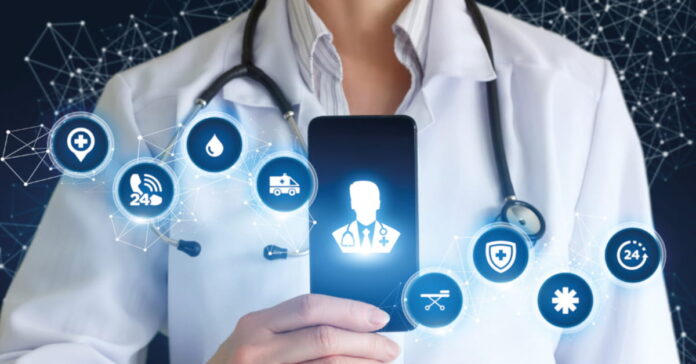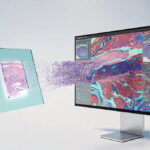Over the years, mobile health has become more innovative. Medical professionals are now integrating mobile healthcare apps into their practices and using them to execute their duties. Developers aren’t lagging; they are building medical apps that address numerous issues faced by healthcare. Undoubtedly, mobile apps have grown extensively and are expected to grow in the coming years.
This article will cover mobile medical application development’s past, present, and prospects. At the end of this article, developers will have better insights on how to build a medical app that can help solve issues facing healthcare.
The Past
BlackBerry was the preferred device for medical professionals until the arrival of the iPhone in 2007. A year after the iPhone launched, it made its Software Development Kit (SDK). SDK developed and launched a wave of interest in medical software. In 2009, the first version of Air Strip, an iPhone app that delivered fetal heart rate monitoring in real-time, was launched. Since then, medical applications have taken a considerable leap and continued to grow and expand.
The Present
Today, mobile medical apps are becoming more popular among patients and medical professionals. A survey done by UnitedHealthcare revealed that more people are increasingly embracing medical apps and healthcare technology. The survey also showed that 37% of respondents had used mobile medical applications compared to 14% in 2012.
Deloitte also did several surveys which show that there has been a rise in the adoption of virtual visits since 2018. 80% of consumers, especially the younger generations, would choose to have a virtual visit again.
Another aspect of mobile medical application development that has experienced growth is the patient’s willingness to share their data, especially since the COVID-19 pandemic. Patients now prefer to use mobile medical apps, virtual care services, and virtual care channels for basic health services. Some of the things that mobile medical applications are now able to do include:
– Contributing to the provision of integrated care.
– Making healthcare services more affordable and accessible.
– Reducing the risks of duplicate medical errors and records by offering access to data shared by patients in real-time.
– Allowing patients to have more control over their health by allowing them to monitor their health data and accessing their doctors when necessary.
Future Prospects
The future of mobile medical app development is bright (click here for the relevant Topflight Apps study). This is because mobile health apps will continue to improve and multiply in the coming years. There will be a better relationship between web-based and native applications. App stores will also continue to flourish. According to surveys done by Esferasoft, some of the future trends observed by mobile medical app developers include:
– 93% of medical professionals find value in connecting mobile health apps to Emergency Health Services
– More people (Up to 61%) will download and use mobile medical apps.
– 31% of surveyed companies provide a precise medical app for patients, while 30% of the organizations are building a health app.
This data shows that the prospects of medical applications are massive. Other mobile medical application development prospects are the Internet of Medical Things (IoMT) and Blockchain. So, we cannot undervalue medical applications. Shortly, they will contribute significantly to managing physicians’ medical duties.
Want to Know How to Build a Medical App?
Several developers now build healthcare applications. And the reason is simple: Mobile healthcare apps will significantly help to improve the healthcare field. Mobile healthcare apps are currently monitoring health conditions, helping to avoid catastrophic health diseases, and monitoring rehabilitation.
With the issues facing the medical field, such as the absence of fixed security standards, mobile health apps are a crucial part of the future of healthcare. Mobile health reduces costs and enhances medicine’s quality. This benefits all stakeholders and users, making healthcare more accessible. So, if you know how to build a medical app, several solutions you can provide will contribute to the future of healthcare.
Final Thoughts
The future of mobile medical app development is secured. This is because healthcare developers are building more medical apps targeted at making healthcare more efficient and effective. As a developer interested in making mobile apps in healthcare services, you must ask yourself some questions. These include: What challenges is the medical field facing? Which solutions have been provided, and how effective are these solutions? The answers to these questions will give you a clear insight into how to build a medical app that works!
Read Also
- Automated Healthcare Software Solutions: How Intelligent Platforms Are Redefining Clinical, Administrative, and Operational ExcellenceThe healthcare industry is undergoing a seismic transformation. Rising patient volumes, value-based care models, staffing shortages, and complex regulatory demands have prompted organizations to look beyond traditional tools and embrace advanced software automation. As providers search for innovative partners capable of tailoring these sophisticated systems to real-world workflows, many turn to MCSI (Managed Care Systems,… Read more: Automated Healthcare Software Solutions: How Intelligent Platforms Are Redefining Clinical, Administrative, and Operational Excellence
- Why Whole Slide Imaging Shapes the Future of Digital PathologyWhole slide imaging has become one of the most important developments in modern pathology. It changes how tissue is examined, how cases are shared and how pathologists collaborate with the wider care team. More than a technological upgrade, it represents a shift in how laboratories think about their workflow, their storage needs and the tools… Read more: Why Whole Slide Imaging Shapes the Future of Digital Pathology
- Comparing 2025 Dental Practice Management Software OptionsSoftware Key Strengths Potential Limitations Best For Dentimax • Offers both cloud-based and on-premise/server deployment. • Tight integration between imaging (e.g. X-ray sensors) and practice management, charts, treatment planning, imaging all in one. • Transparent pricing and relatively simple UI/usability; solid for small to medium general practices. • May lack some of the… Read more: Comparing 2025 Dental Practice Management Software Options
- Top Innovations in Dermatology and Skincare TechnologiesHave you ever wondered how skincare keeps getting better year after year? From fighting acne to reducing wrinkles, today’s treatments seem more advanced than ever before. The tools and techniques used by dermatologists today are smarter, safer, and more effective than those we had just a few years ago. These breakthroughs don’t just help with… Read more: Top Innovations in Dermatology and Skincare Technologies
- Telehealth and Beyond: Building a Connected Continuum of CareHealthcare is on the verge of a radical transformation. Technology no longer simply supports medicine; it actively shapes how care is delivered and experienced. Achieving a seamless continuum demands more than deploying tools—it requires intentional design, coordinated teamwork, and innovative platforms that adapt to diverse clinical and patient needs. This article explores key strategies for… Read more: Telehealth and Beyond: Building a Connected Continuum of Care






